The Potential of a School Garden - Improving Nutrition through the Cycle of Food -
2025.09.04
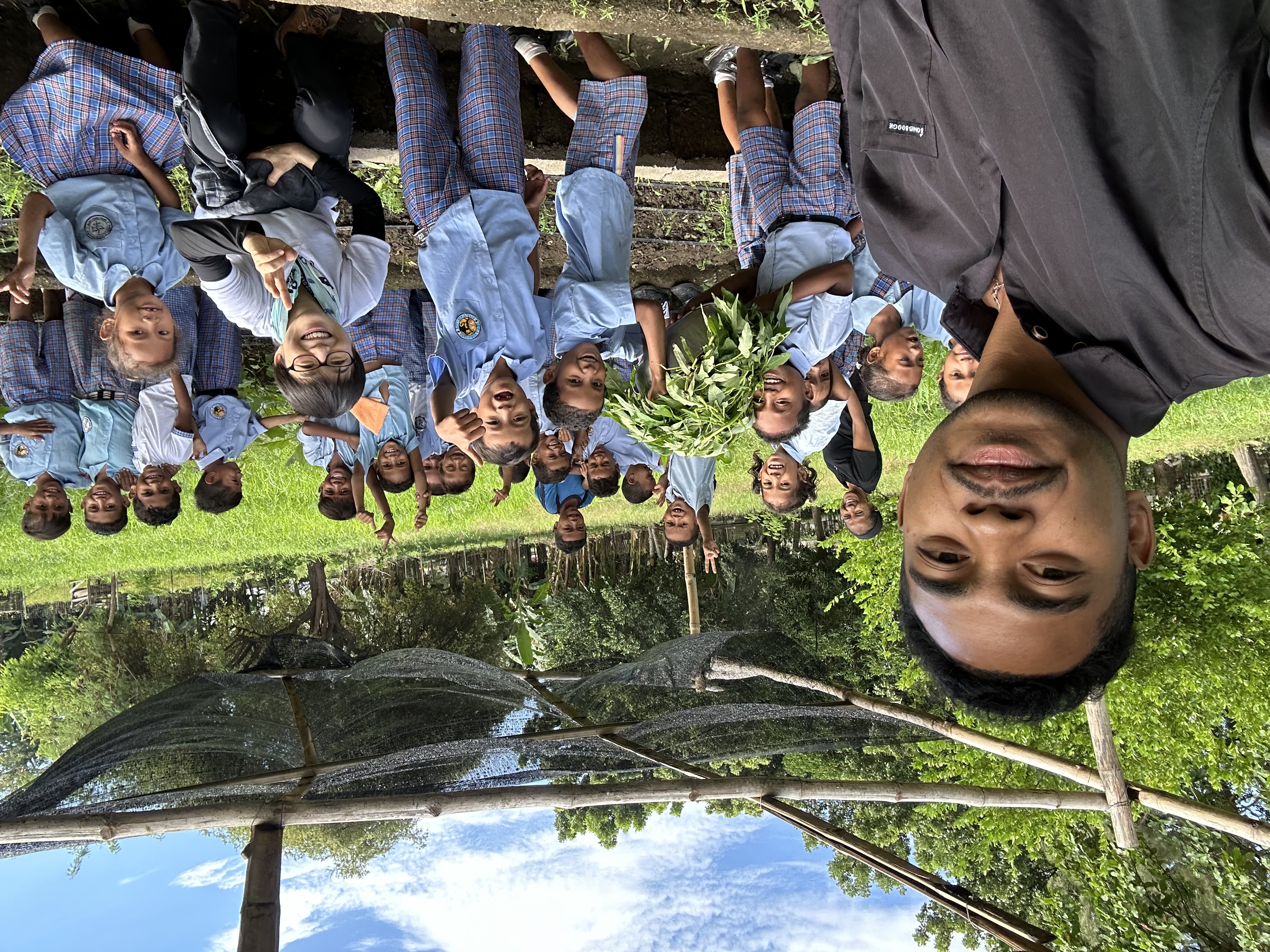
Second from the right is the author
Yuka Shudo(2024/1 batch)
My name is Yuka Shudo, and I have been serving as a nutritionist volunteer at a primary and secondary school with a kindergarten since September 2024. The school has a school garden. There had been a garden in the past; however the area was overrun with weeds and resembled an abandoned field when I arrived.
Shortly after my arrival, the principal shared her dream with me.
“I want to create a school garden where we can grow a variety of vegetables.”
I was inspired by the ambition of her vision, but the scale overwhelmed me. However, when I was working as a nutritionist in Japan, the schools often had gardens, and students harvested vegetables for their school lunches.
In Timor-Leste, nearly half of children under five suffer from stunted growth, and our school is no exception. A school garden not only provides ingredients for meals but also offers children the opportunity to learn about food through hands-on experience. I recognize the principal’s dream not just as a gardening project, but also to improve children's nutrition through food education. I told her that I want to help build the garden, drawing on my experience in Japan.
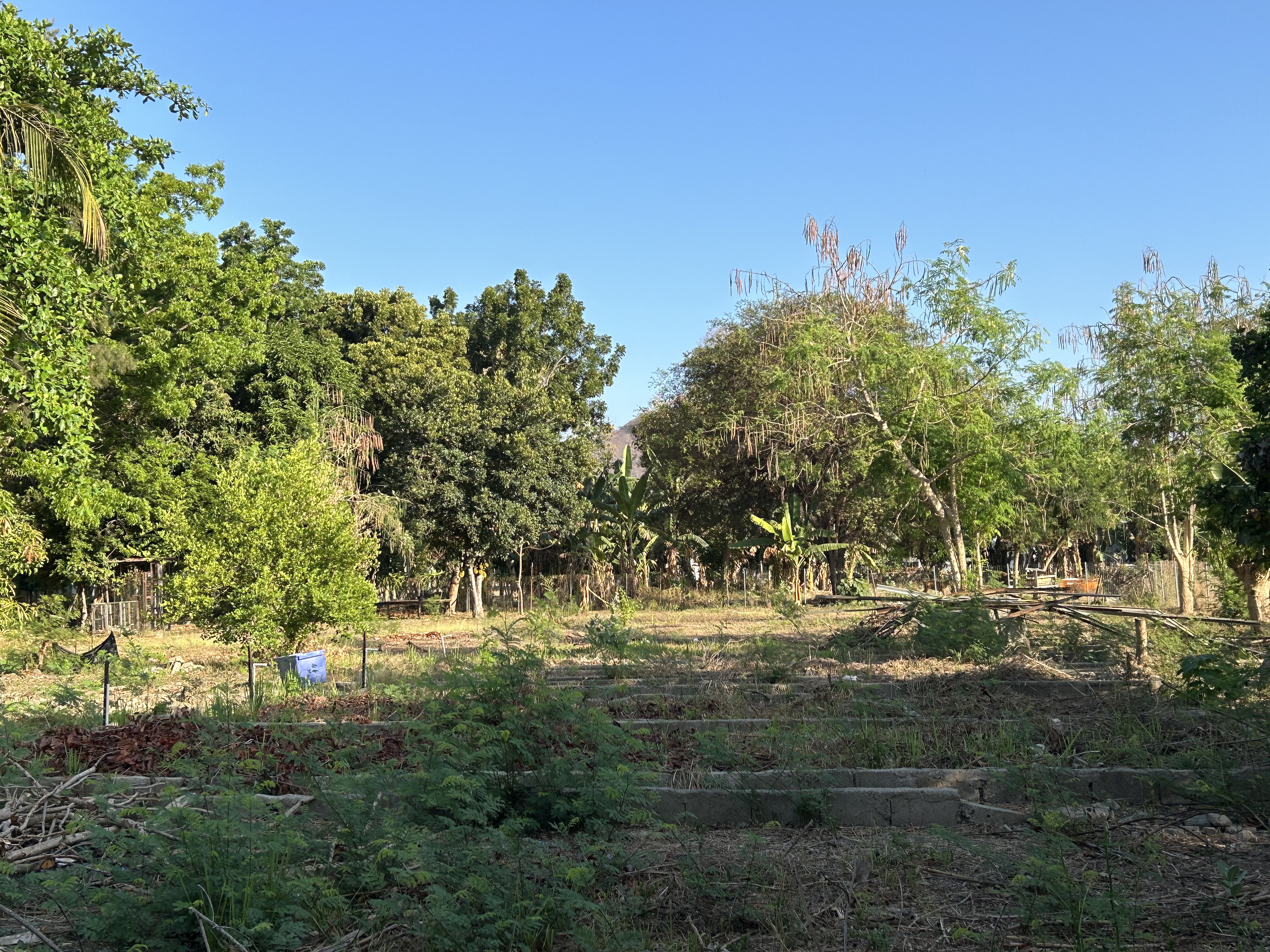
Overgrown garden
One month after my assignment started, we began creating the school garden. In the evenings, students from the dormitory, security guards, sisters, and fellow JICA volunteers joined forces to till the soil with hoes. The land had not been used for a long time, and the soil was hard. We could only manage one plot per day after our regular work. Meanwhile, the janitor and security guards built a shed for growing seedlings. Once the soil was prepared, ninth-grade students constructed a wooden frame and installed a shade net. Thanks to everyone’s efforts, the garden soil was ready in about three weeks.
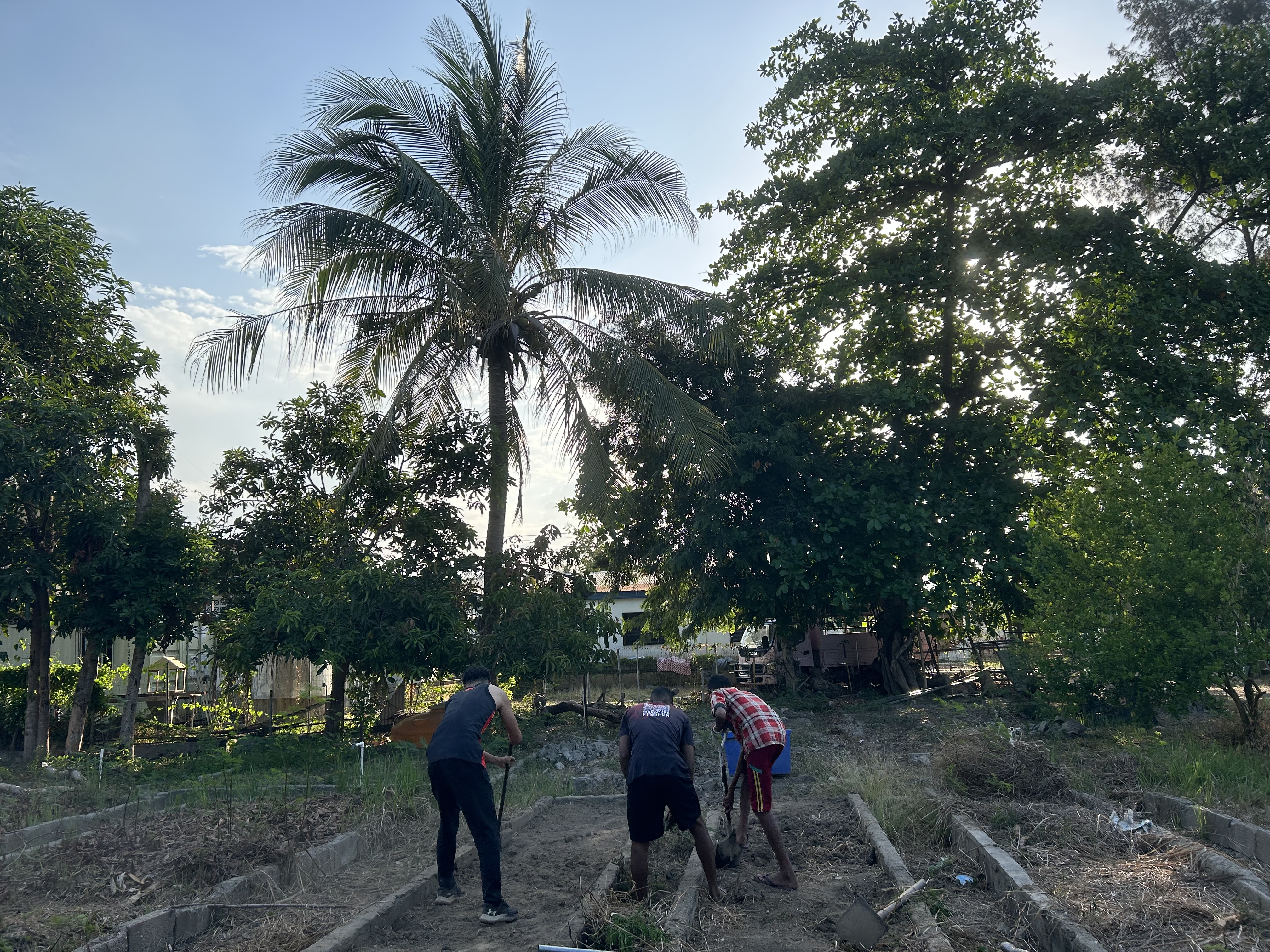
Making garden
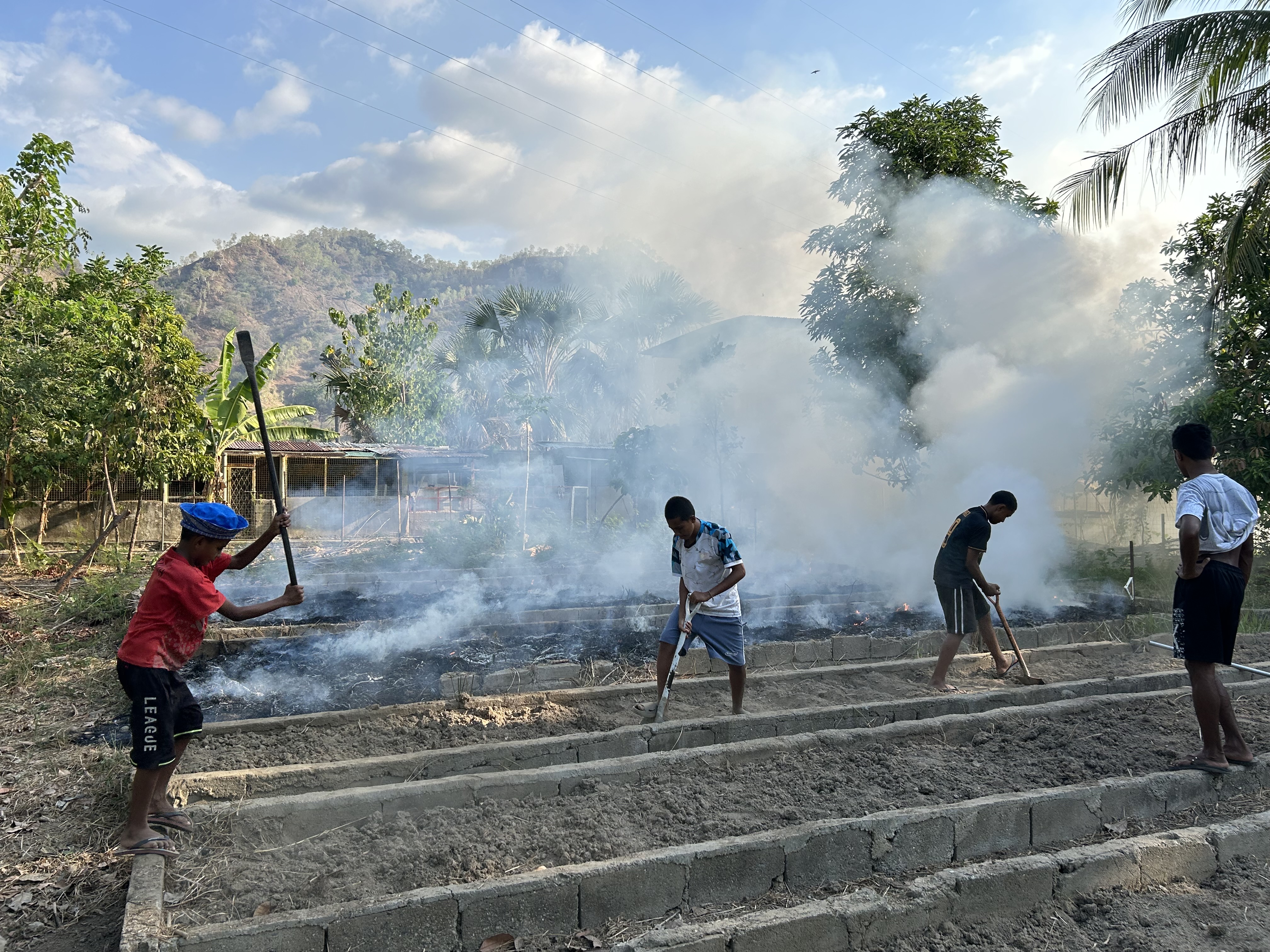
Making garden
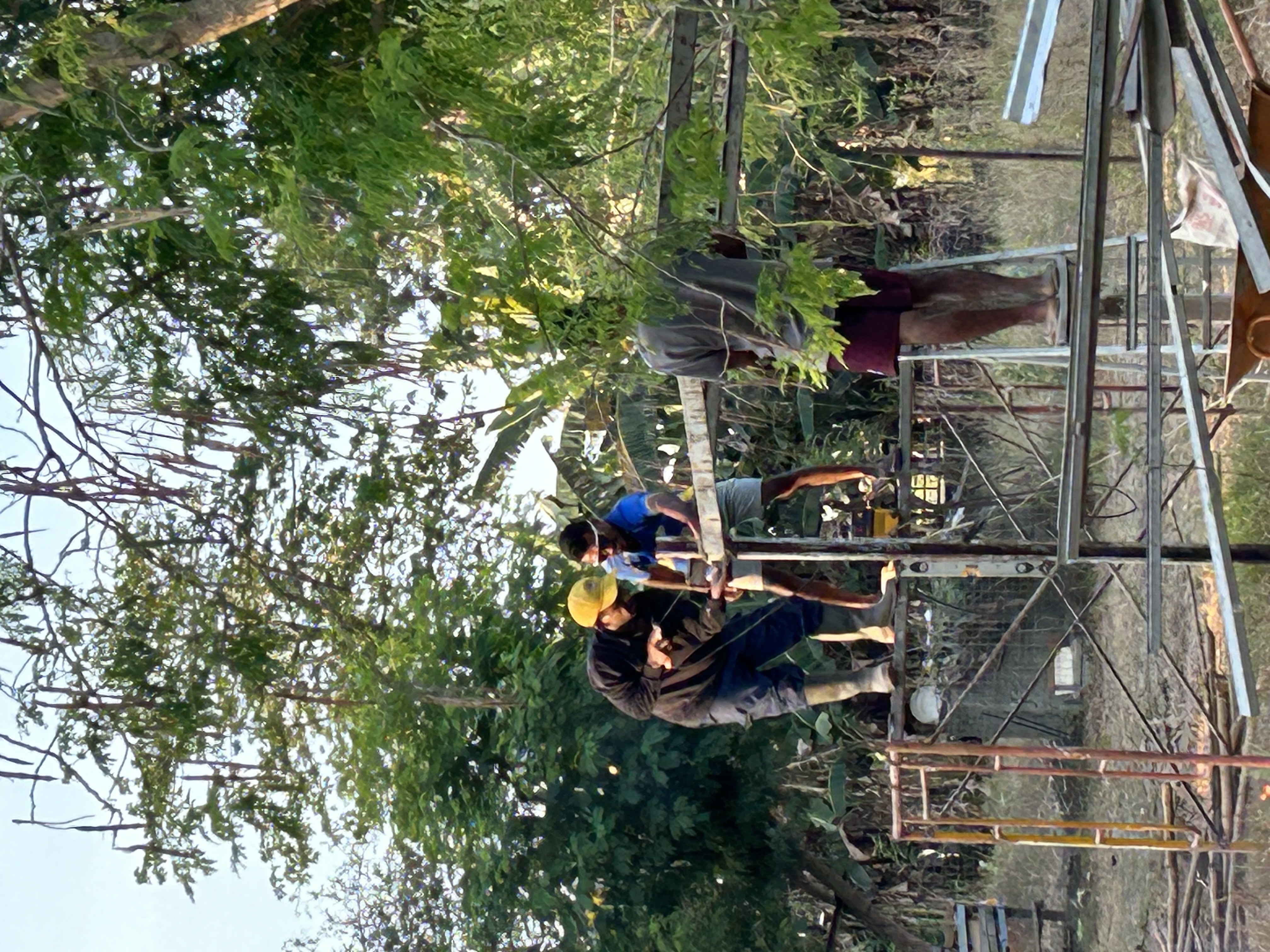
Building a nursery station
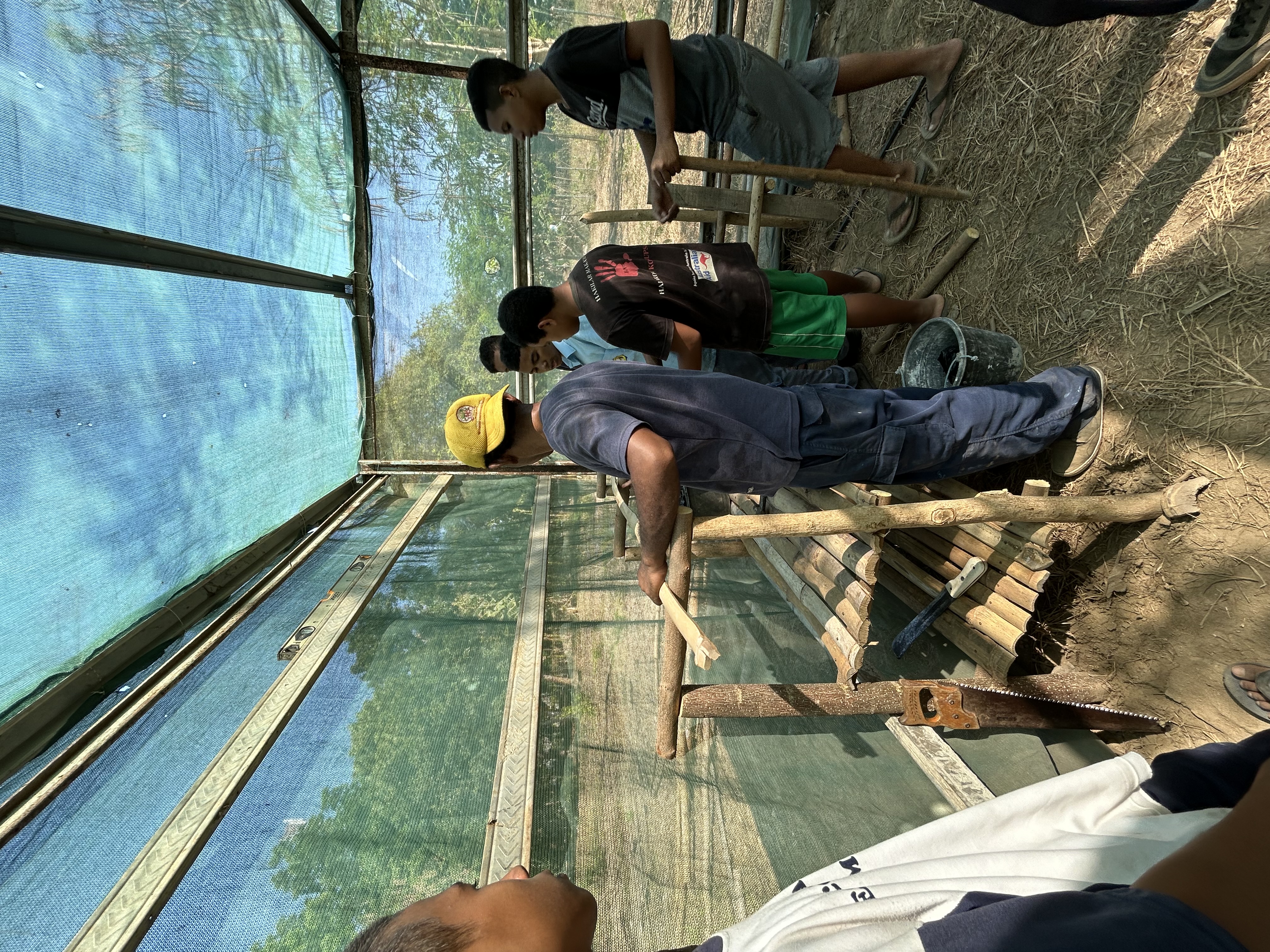
Building a nursery station
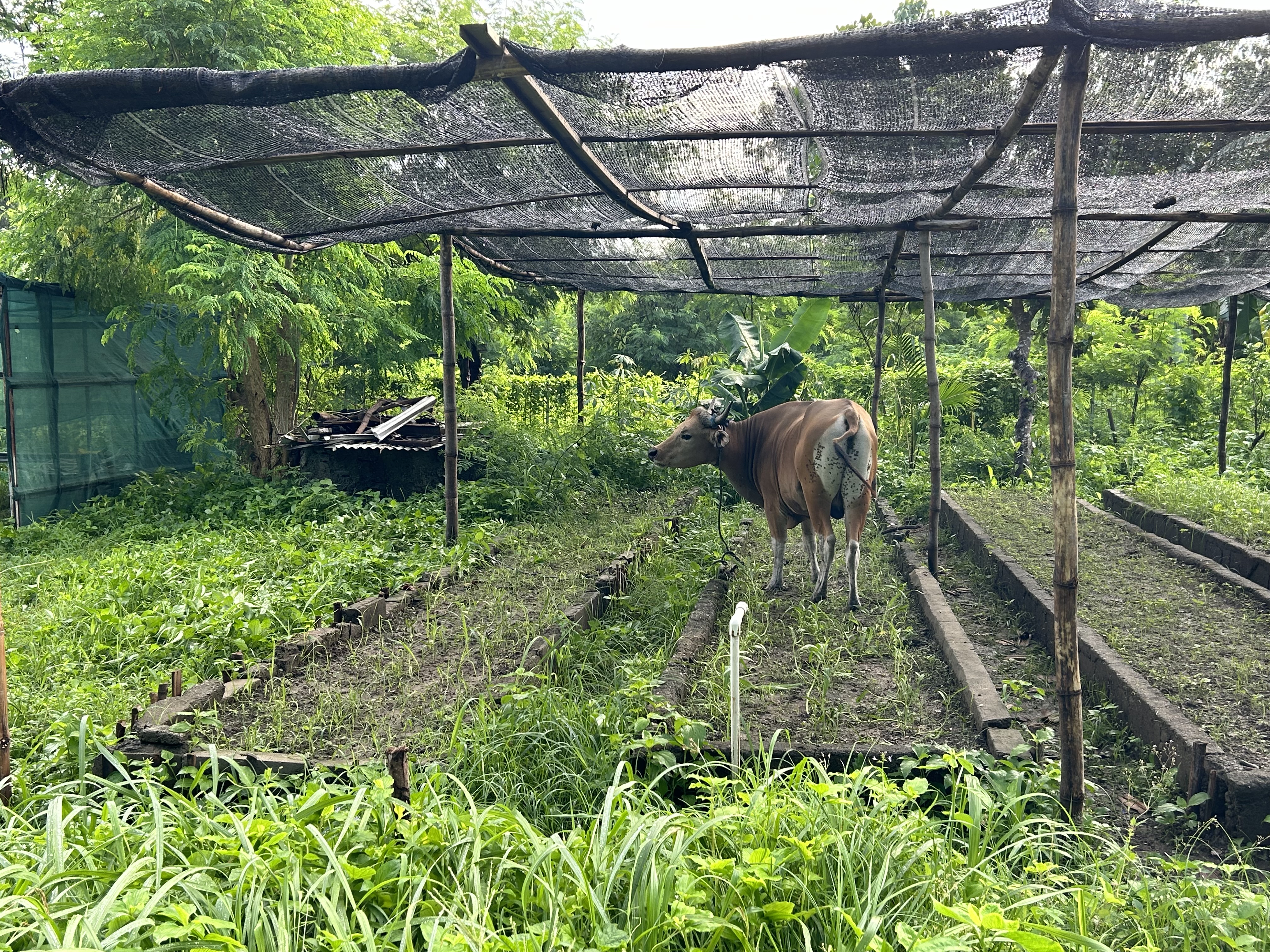
Cows eat plansts and stomp the garden
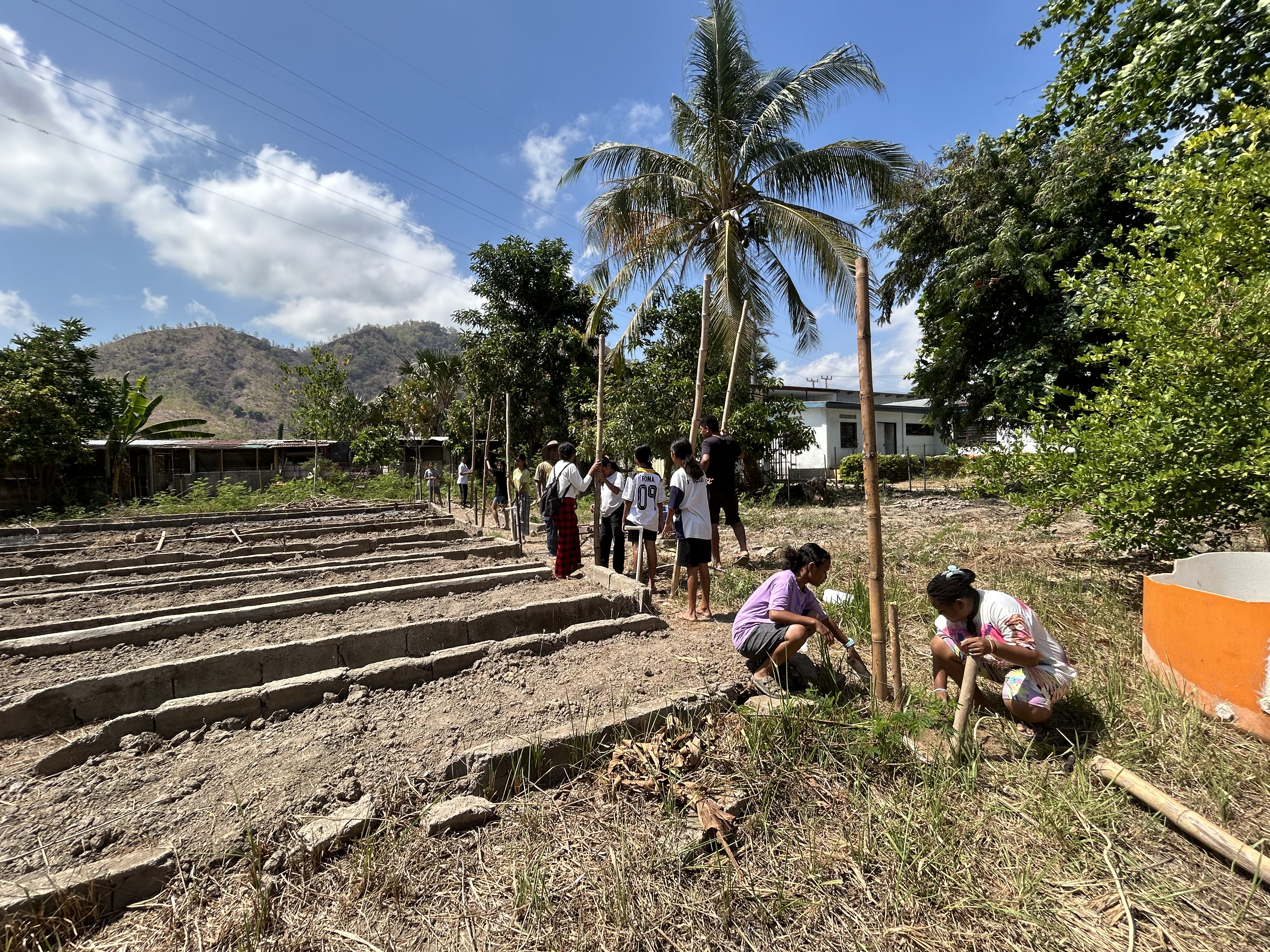
Making shade for the garden
However, planting seeds brought new challenges. The vegetables didn’t grow as expected, likely due to poor soil nutrition. When I shared this concern with the janitor, he directed me to a place with fertile soil made from cow and goat manure, which helped us improve the garden’s condition. We also began composting using a frame provided by JICA, mixing food scraps and fallen leaves. Local residents contributed rice husks and wood chips. During the rainy season, farmers taught us how to protect young sprouts from being washed away by rain using banana stems cut into half circles. As we prepared for the dry season, NGO CARE International introduced us a drip irrigation system. This not only reduced the labor of watering but also conserved water by targeting only the necessary areas.
Despite these improvements, many of our crops were trampled by cows or eaten by goats, and we were far from a successful harvest. However, I gained invaluable insights into the Timorese people, who creatively utilize local materials readily available to them. These lessons were more rewarding than successful harvest.
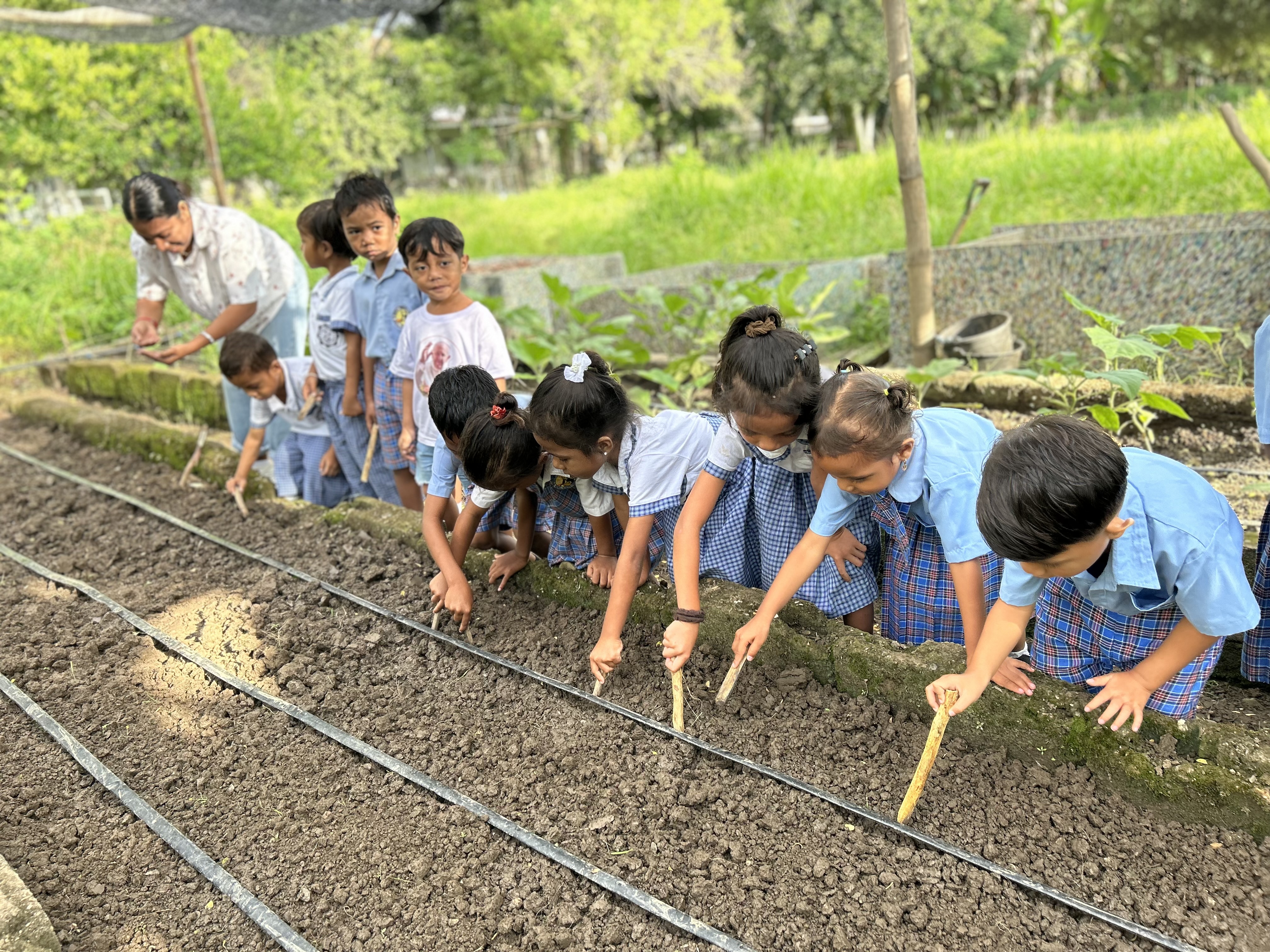
Seeding
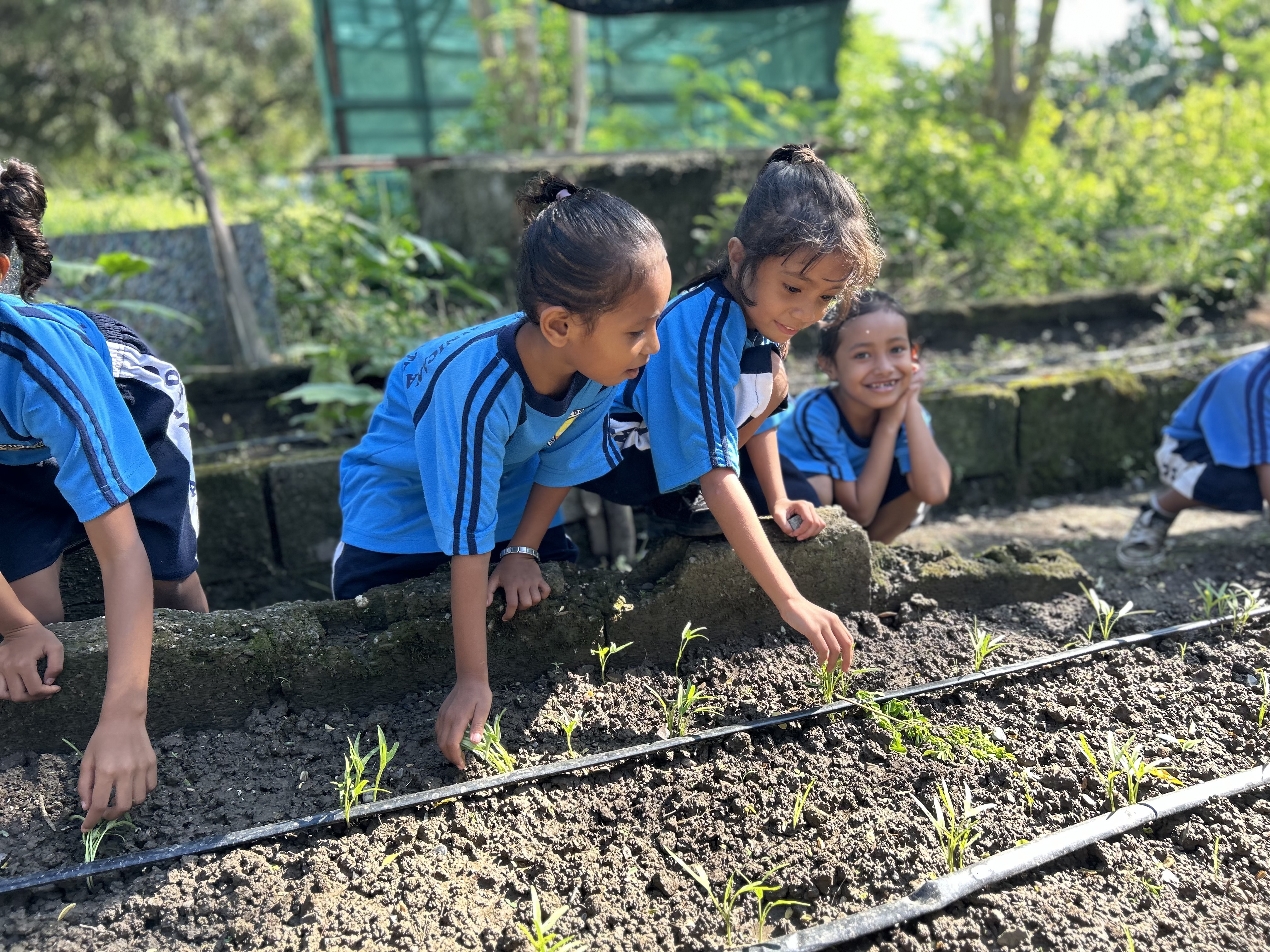
Students are checking the growth of the vegitables
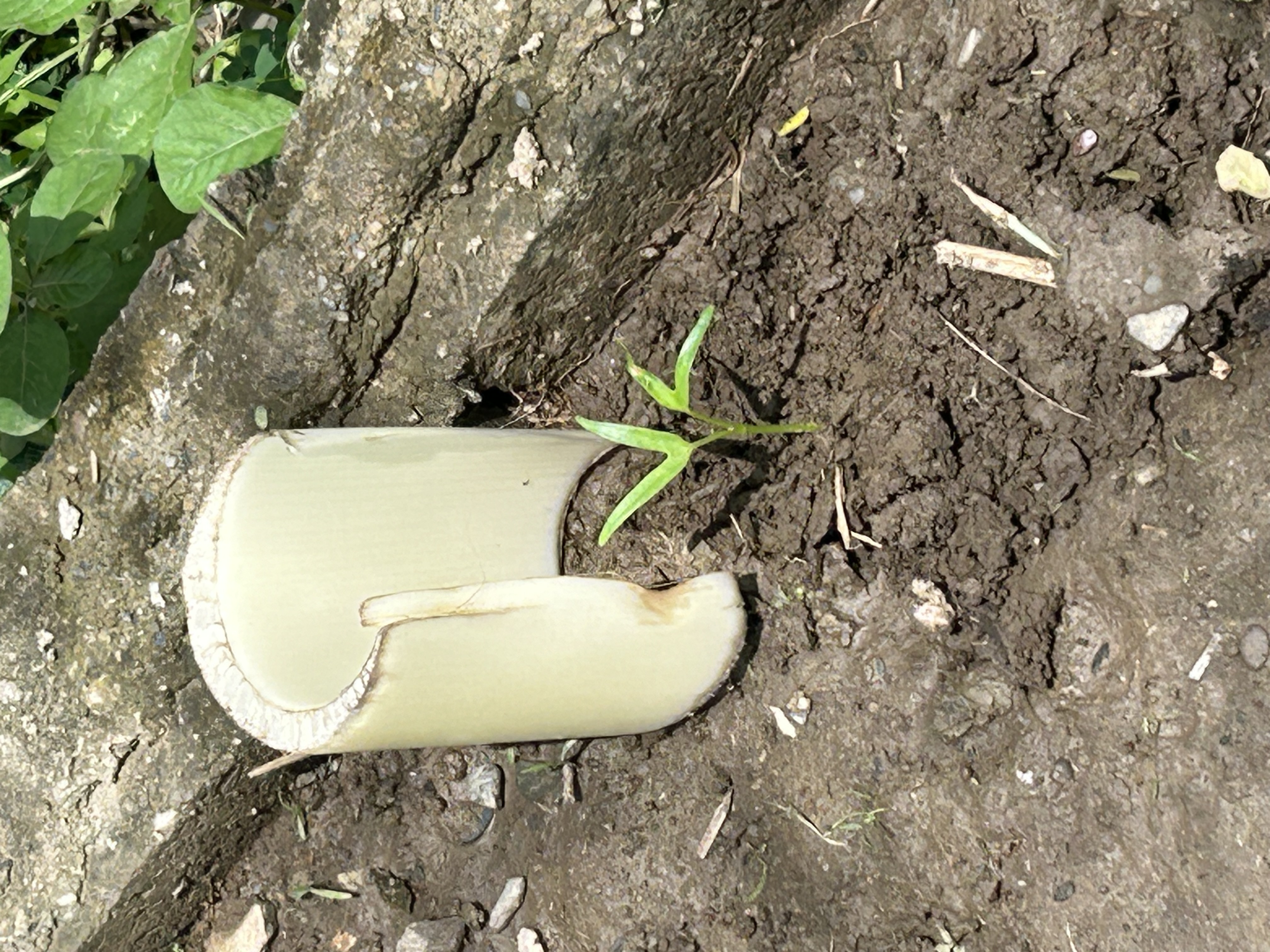
Small technique to protect the plants from flushing.
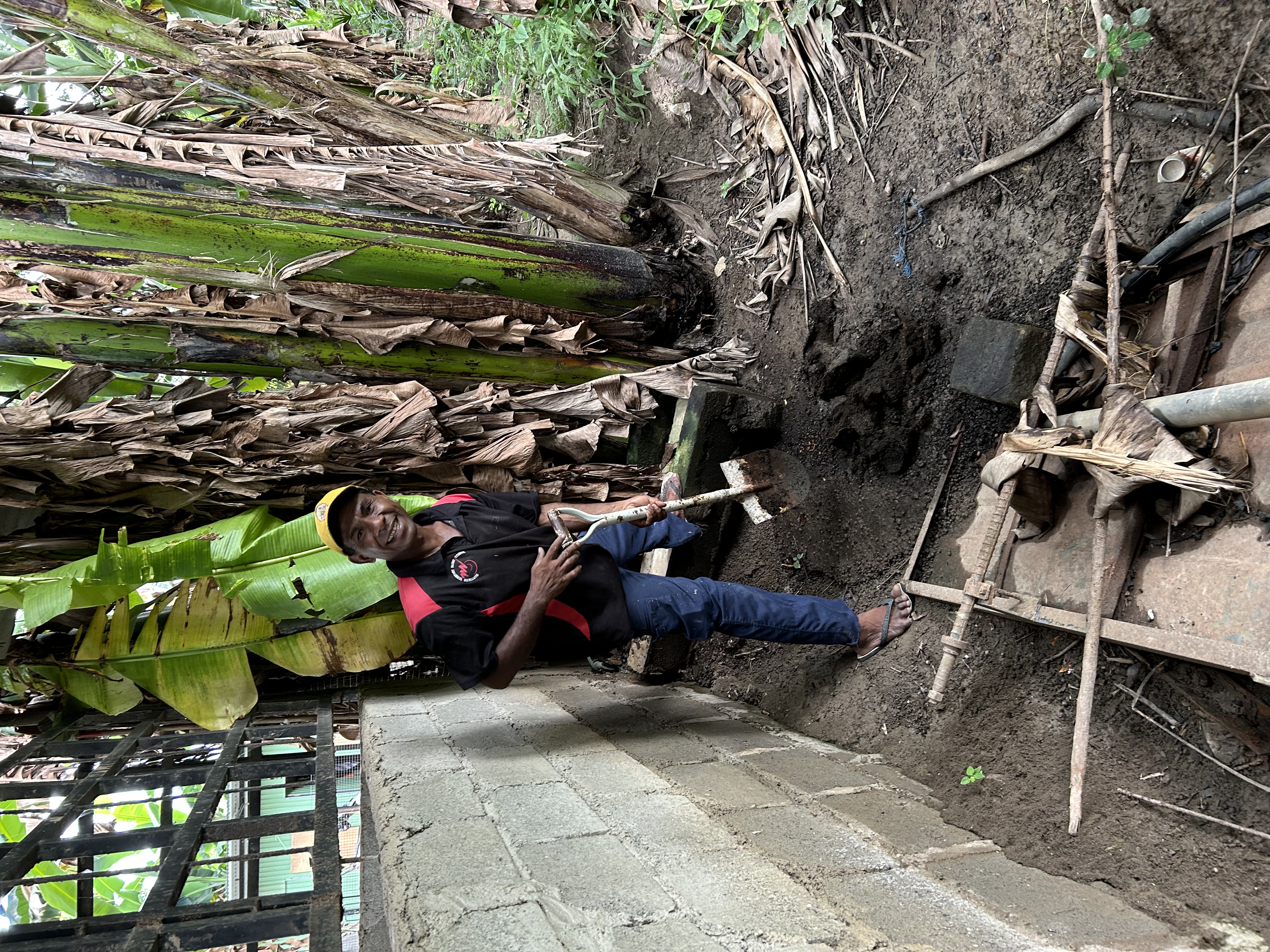
making compost
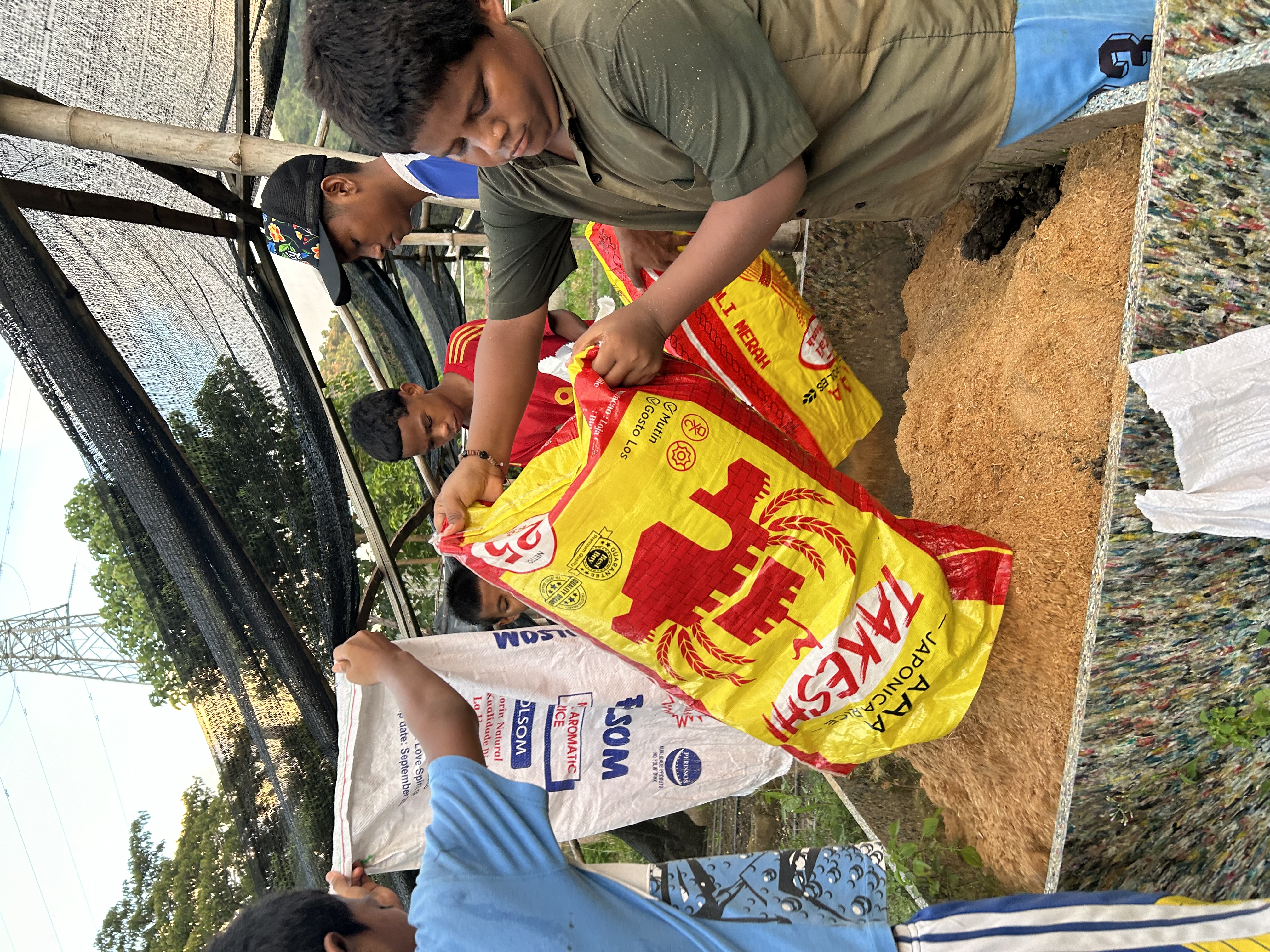
making compost
After much trial and error, we rebuilt the garden. From May to June, kindergarteners and elementary students experienced the full cycle of growing Kankun (water spinach)—from planting seeds to harvesting. When I invited them to check on the Kankun, they excitedly chanted its name and ran to the garden. They gently touched the sprouts, eagerly observing the vegetables’ growth. When we served the harvested Kankun in rice porridge, the children smiled and said it tasted better than usual. Although Kankun is a familiar vegetable to children, I realized that children rarely get the chance to observe its growth over time. Their enthusiastic response convinced me that continuing this initiative could foster interest in vegetables and reduce resistance to eating them.
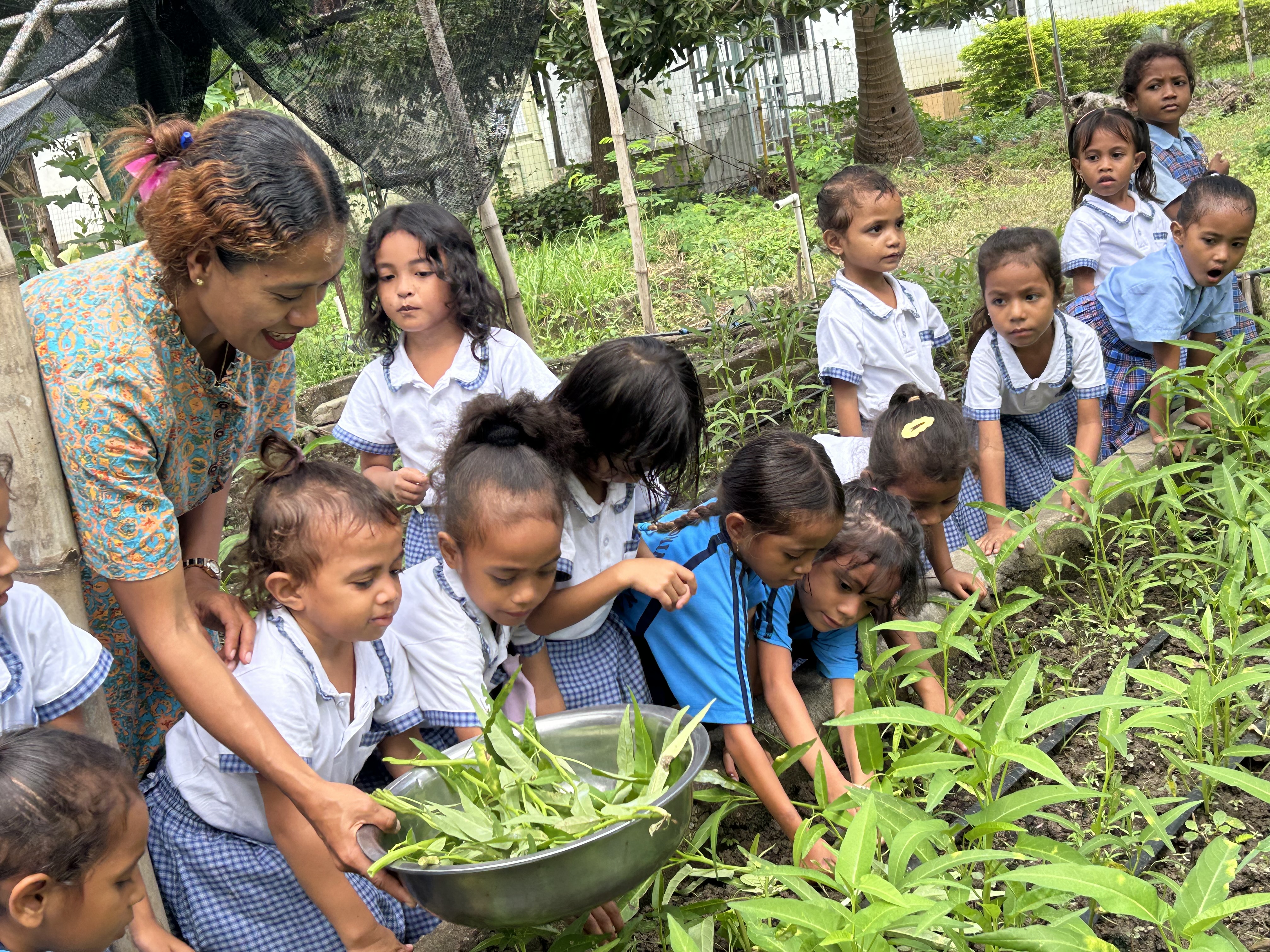
Harvesting
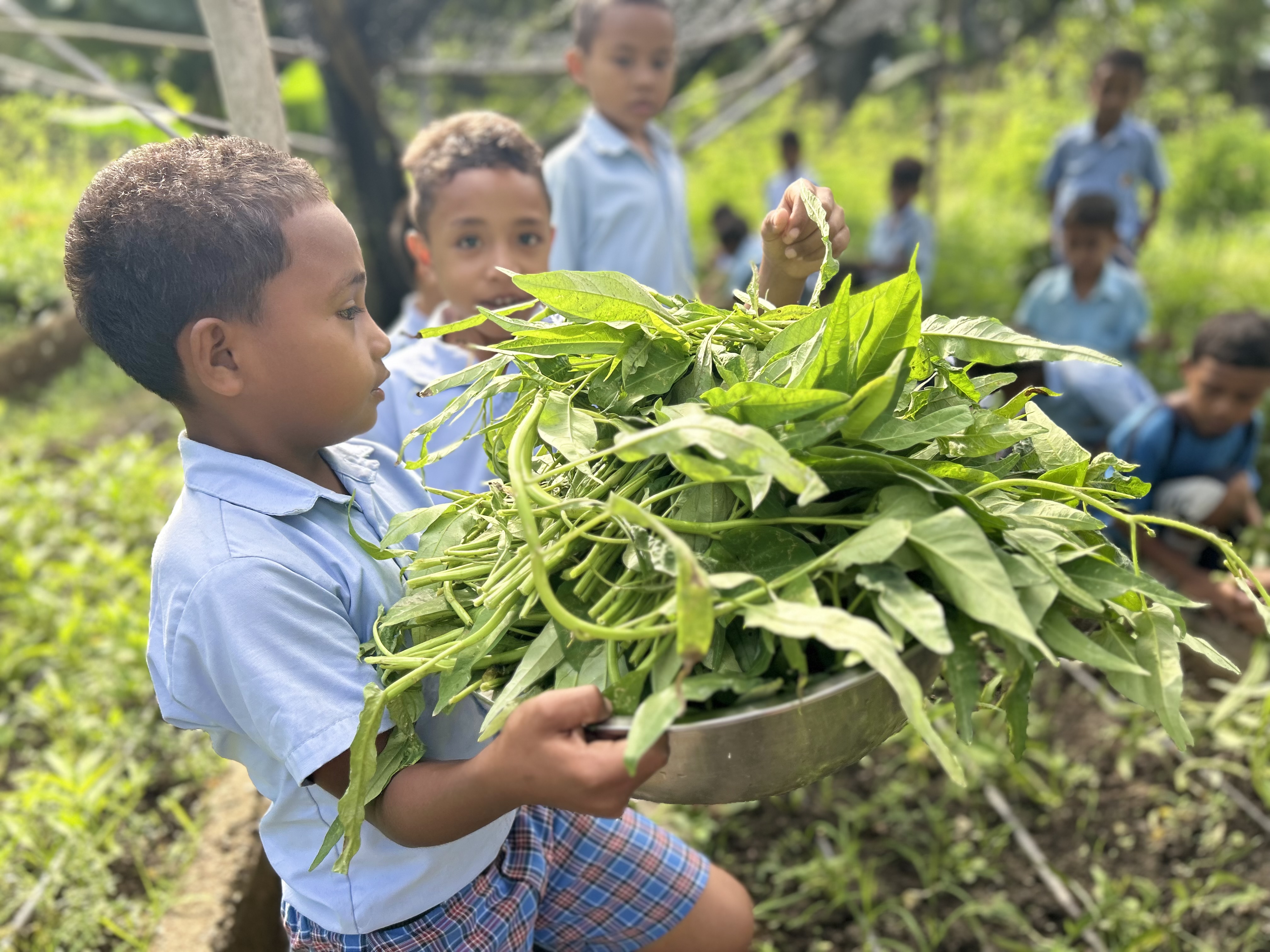
Successful harvest
To sustain the school garden, I believe it’s essential to integrate it into the school curriculum. Until now, we’ve relied on teachers whose classrooms are near the garden, and the activities haven’t always aligned with lesson content. If teachers can connect the garden to their subjects, experiential learning could deepen students’ understanding. I plan to introduce examples from Japan to show how each subject can be linked to the garden.
scroll